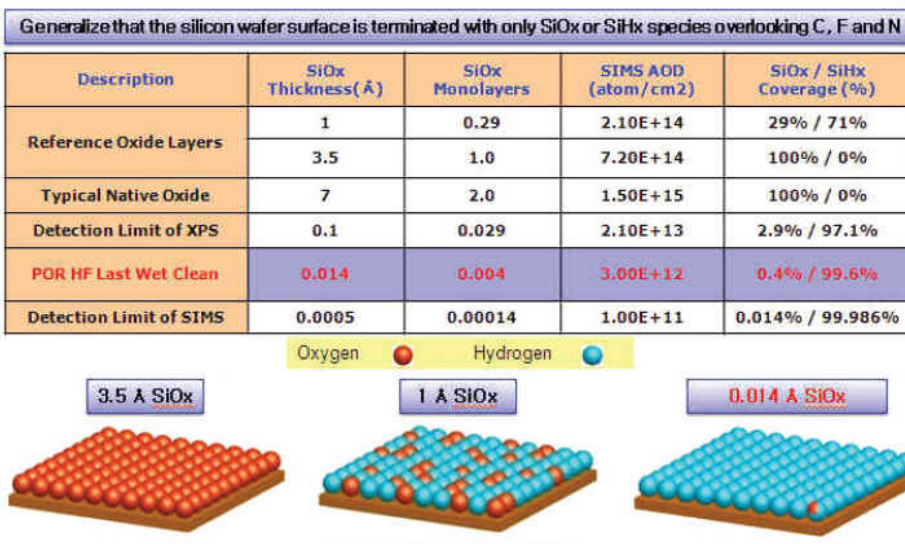Oxide and Hydride Silicon Surface Termination
Oxide terminating cleans suffice for processes that don’t restrict a subsequent high temperature process and are tolerant to silicon loss, but this tolerance is becoming very limited. Even in processes where it is still acceptable, the dissolved impurities like oxygen (DO), carbon dioxide, Total Organic Carbon (TOC) and silica in standard UPW are still present and can have a detrimental effect on the oxide integrity and other electrical properties. The interstitial carbon can also be diffused into the silicon when thermally processed. Dissolved organics in UPW needs to be dramatically reduced to improve the purity of these chemically grown oxides. Hydrogen terminating cleans, which are now in higher demand, are far more challenging due to the difficulty in creating a pristine and stable H-terminated silicon surface. There are three primary hydride structures that are formed on the silicon surface (mono- , di- , tri-) all of which have different binding energies and mostly controlled by the silicons crystalline orientation. SiHx terminations are ideal for many processes due to their ability to be dissociated at low temperatures (500-550°C) which suits very well for thermal budgeting. A HF last process is currently the only viable method to achieving this with wet cleaning. The Ohmi and IMEC institutions have each defined what they believe to be the best wet cleaning sequences1) to achieve all of the silicon surface criteria, both of which are short sequence (2-4 steps), utilize ultra-dilute chemistries and terminate with a dHF-based mixture. Both of these welldeveloped and characterized process sequences assuredly work well in a very controlled laboratory environment, but there are severe challenges when trying to implement these into a manufacturing mode: -Achieving 100% SiHx terminations using a dHF wet cleaning process is virtually impossible -Minimizing the queue time between the wet clean and the subsequent process is critical due to the inherent reoxidation of the silicon surface when exposed to air -Exposure of the SiHx surface to air also permits for the adhesion of organic contaminants Similar to oxide terminating cleans, the dissolved impurities in UPW have a dramatic influence on the dHF process’ ability to provide a pristine, stable H-terminated silicon surface.

上一篇: 磷扩散过程中的金属表面污染
下一篇: 使用稀 HCN 水溶液清洗SiC 的方法